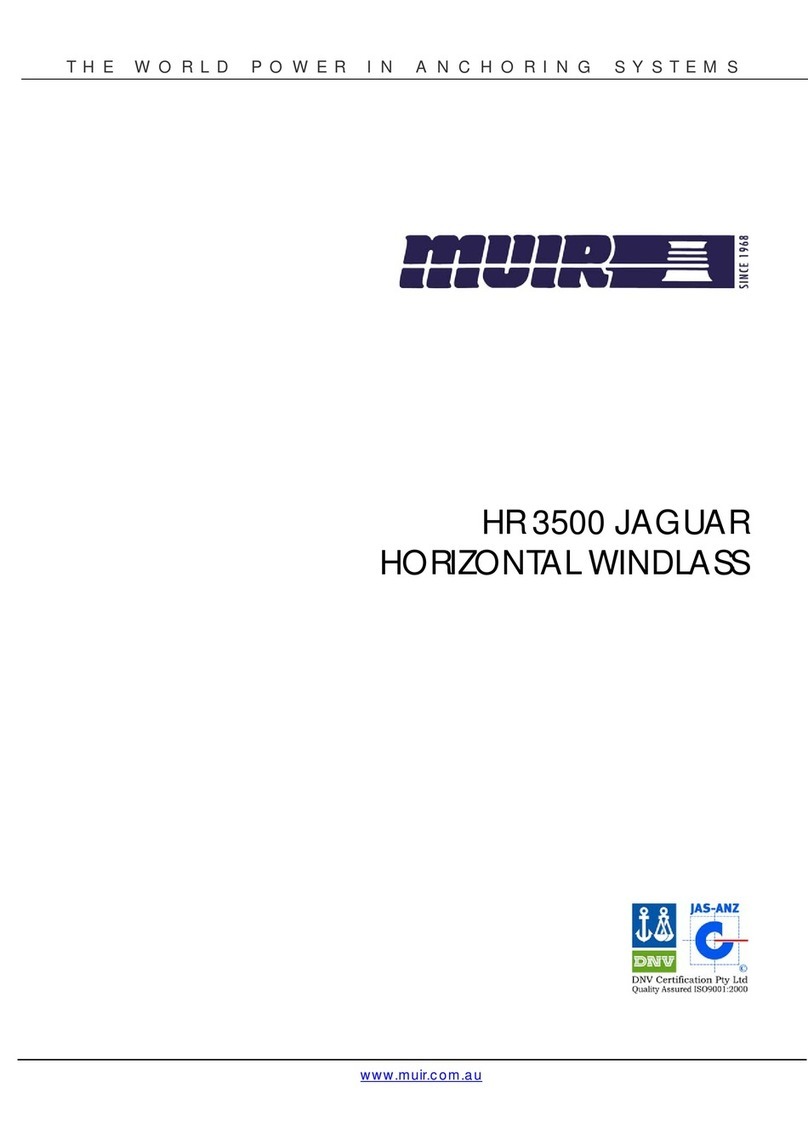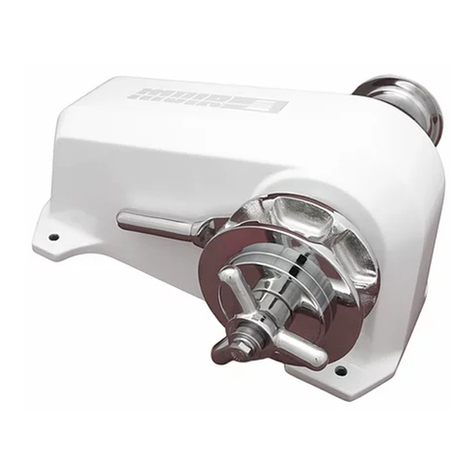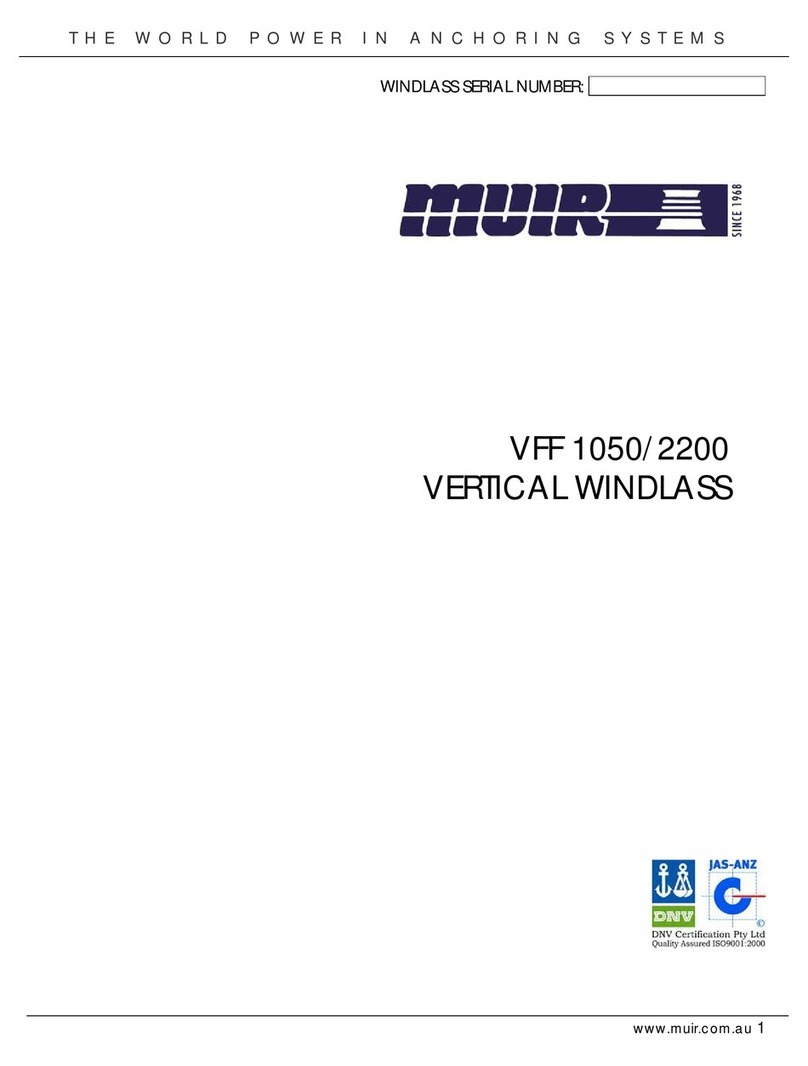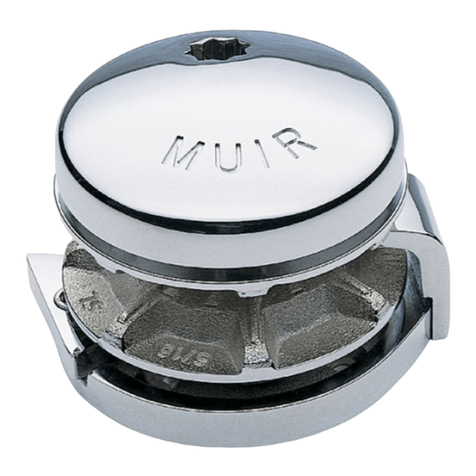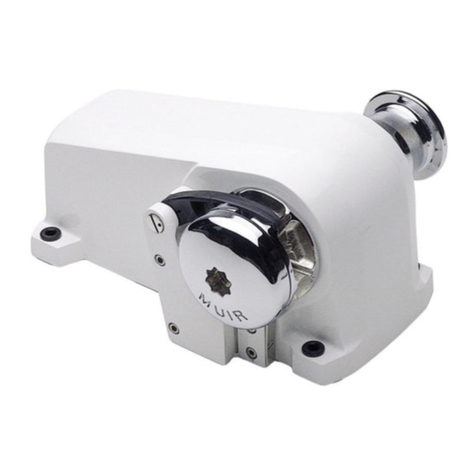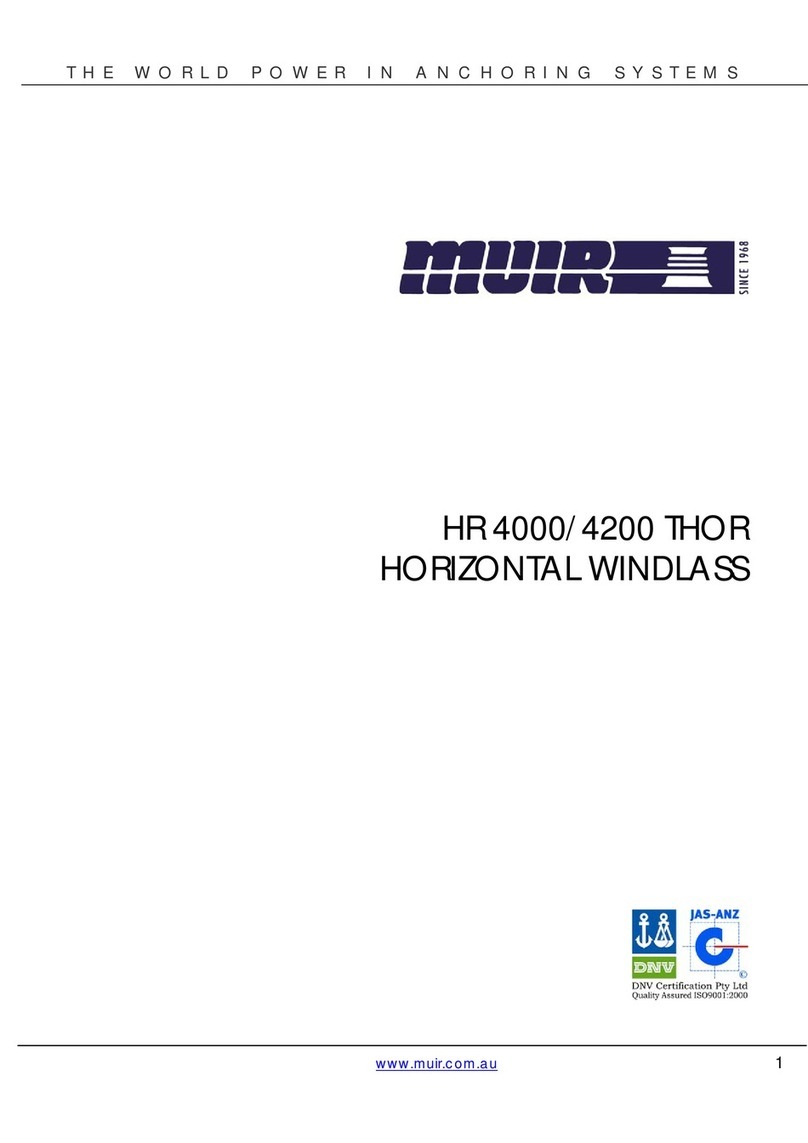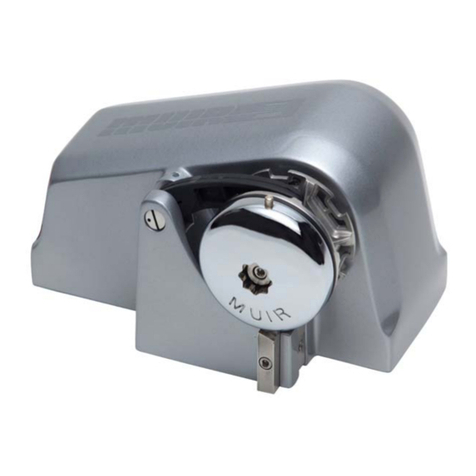
T H E W O R L D P O W E R I N A N C H O R I N G S Y S T E M S
www.muir.com.au
Horizontal Winch Chain pipe Fitting
1. To position the chain pipe (A), first align the stripper (B) with the
centre of the gypsy.
2. Wrap the chain (D) around the gypsy (C) and through the
chain pipe to position the chain pipe correctly.
3. Align the stripper to the inside of the chain as it falls vertically
into the chain locker.
4. Mark the chain pipe position and drill the bolt holes, finally cut
out the section for the chain to pass through the deck and
then bolt the chain pipe into place.
Horizontal Winch Chain pipe with Rope/Chain Management System Fitting
1. Position the chain pipe (A) so that the peeler (B) is directly
under the centre of the gypsy (C), and the finger sits on top
(D).
2. lide the / stripper (E), over the middle of the gypsy lining it
up with the hole in the peeler for the screw (F).
3. Fit the stripper with the screw making sure the countersunk
head is inside the chain pipe. Tighten with washer and nylock
nut
4. Check the position of the chain pipe and make sure the
stripper does not hit the gypsy when it is rotating. pot the
holes for the chain pipe on the deck with the chain pipe in
position. Remove the chain pipe and drill the mounting holes.
Refit the chain pipe, checking its position again, and fasten it
to the deck.
5. To tension the rope finger, loosen the grub screw (G), behind
the finger in the chain pipe, and turn the pin (H), towards the
gypsy with a large screwdriver, retighten the grub screw.
Manual Overri e System (MORS)
This allows the operator to manually recover the anchor and anchor rode without the use of the electrics. For
manual operation the locking pawl should be first engaged into the gypsy, this stops the gypsy from running
back wards, the clutch should be released marginally by turning in an anti-clockwise direction. Now the gypsy is
free to turn and the manual override handle can be moved in a clockwise direction to engage the gypsy, when
pulling in an anti-clockwise direction the MOR pawl will engage and drive the gypsy retrieving the chain, as the
handle is moved clockwise the weight will be taken by the locking pawl.
Rope/Chain Management System (RCMS)
Optional chain pipe kits (with pipe, special 180 degree stripper and spring loaded finger) are available. The rope
finger pawl guides the rope and chain around the gypsy and through this special chain pipe.
The standard chain pipe with its integral stripper is normally supplied when otherwise specified or ordered by the
customer.
A justment: Firm tension of the finger is required to reduce rope (nylon Line) slipping through the gypsy. Check
the spring tension (at least) annually and re-tension the spring when needed. To adjust this tension (if your line is
slipping) refer to the procedure below.
Proce ure:
1. Loosen the grub screw on the chain pipe with an Allen key for finger adjustment.
2. Turn the screwdriver clockwise to tension the spring, while holding the tension re-tighten the grub screw






